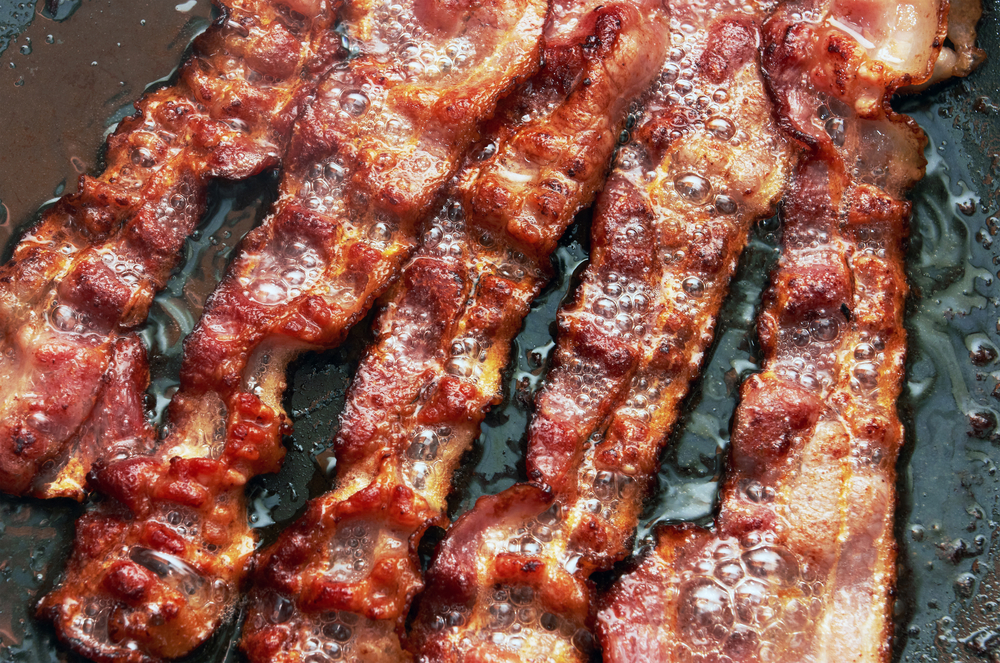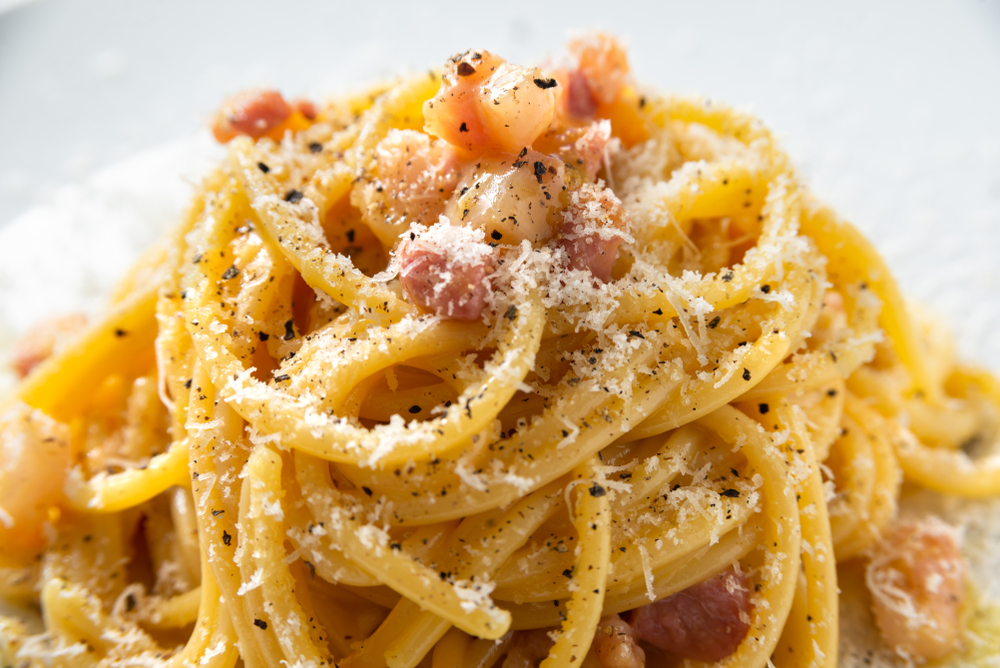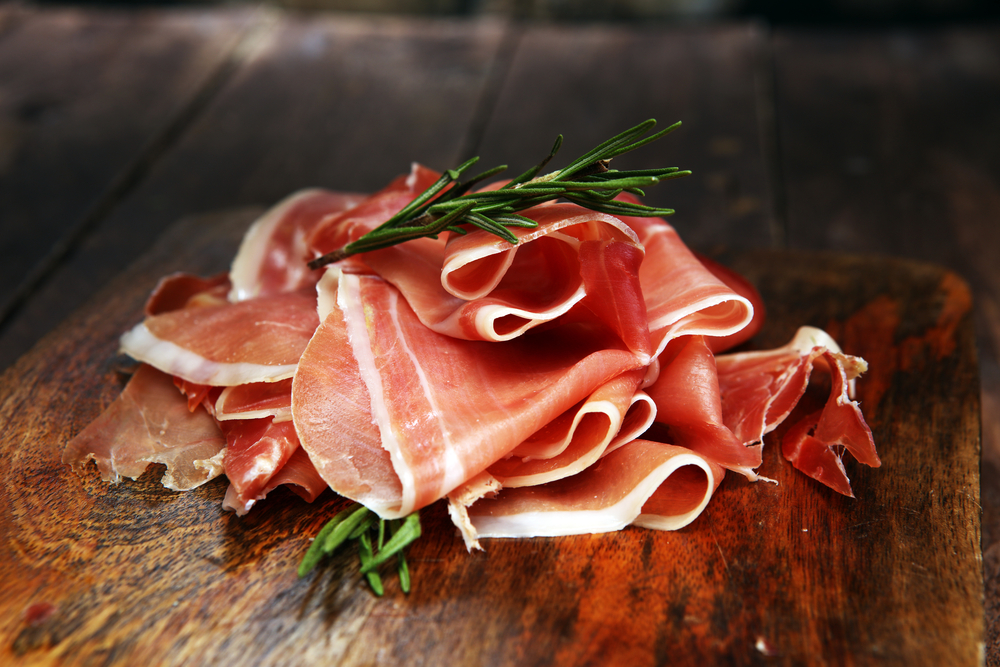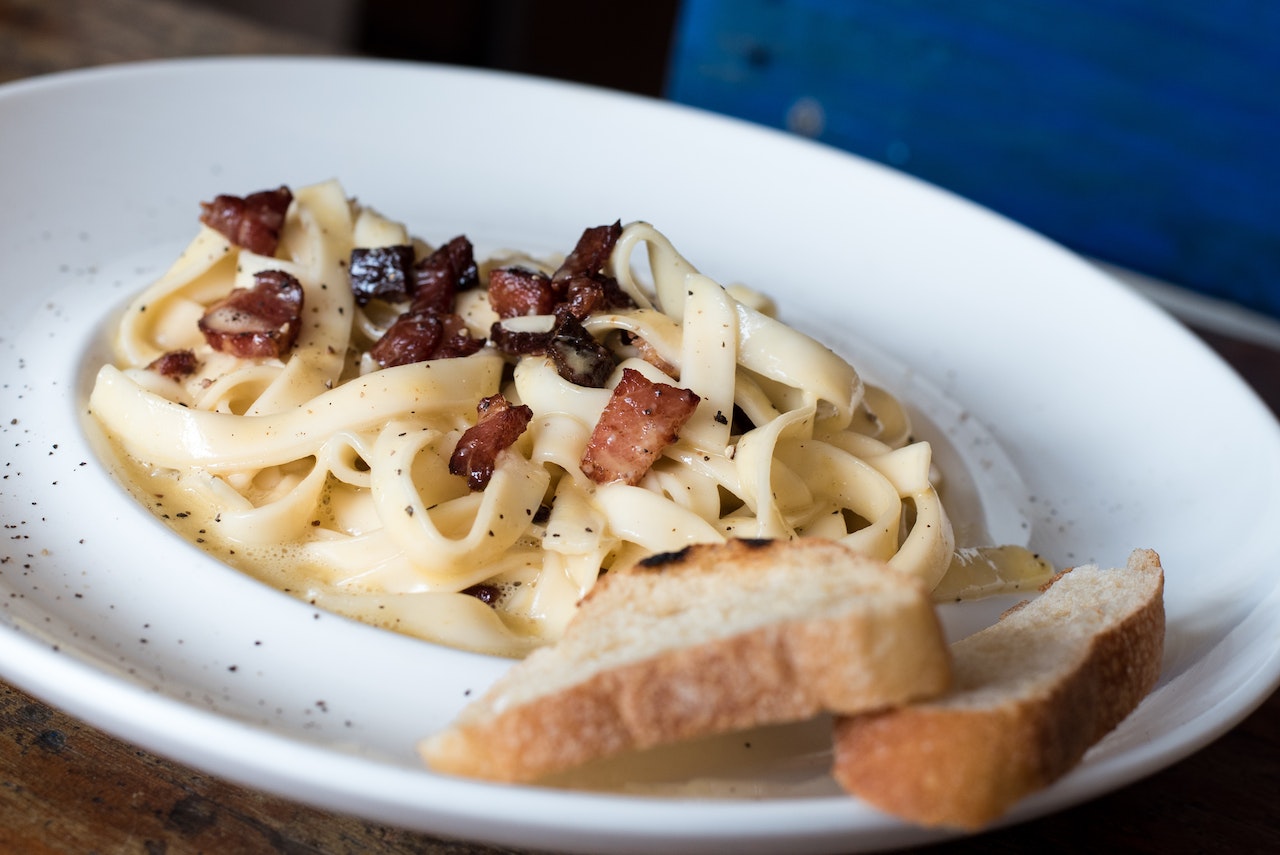As a fan of pasta carbonara, I know how frustrating it can be to have leftovers that don’t taste as good as the original dish.
However, reheating pasta carbonara is not as difficult as it may seem. With the right techniques, you can enjoy your favorite dish again without compromising its flavor and texture.
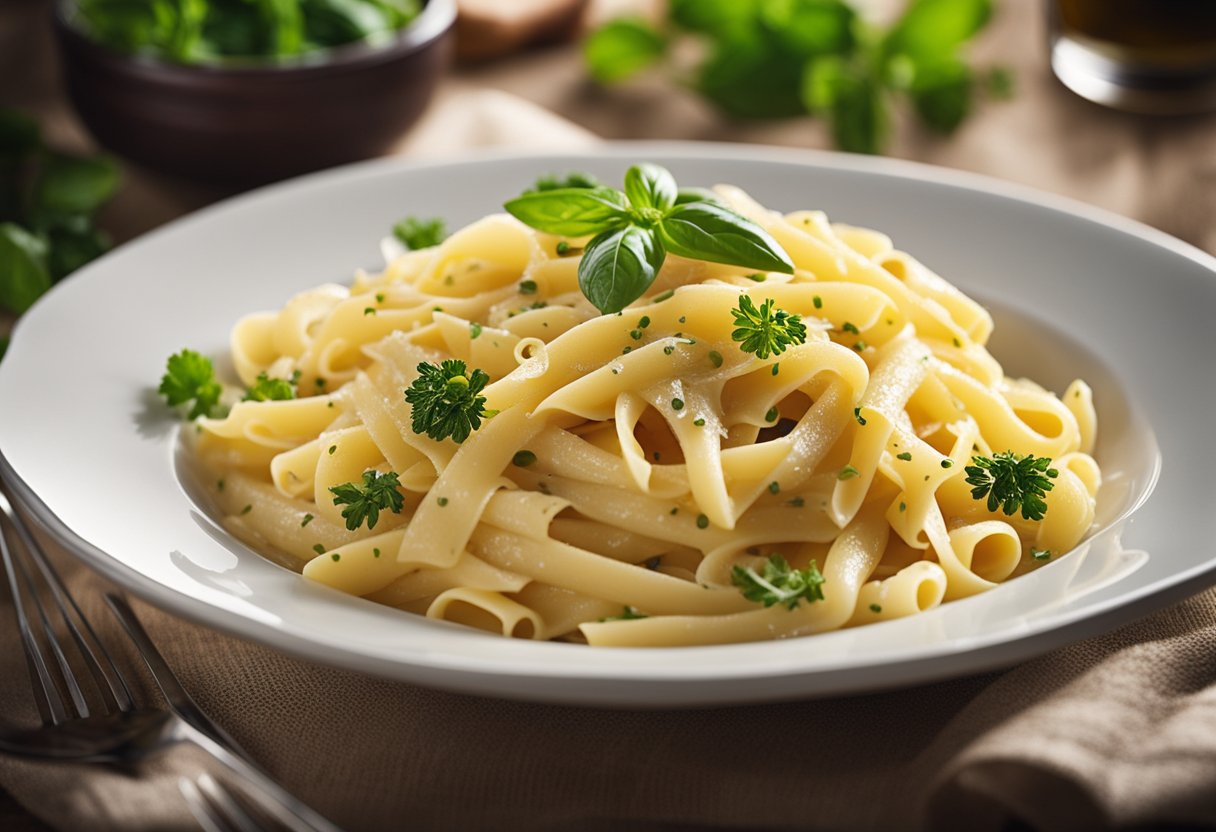
Understanding pasta carbonara is crucial for reheating it properly. This classic Italian dish is made with spaghetti, eggs, bacon, and Parmesan cheese, and its sauce is creamy and delicate.
When reheating, it’s important to preserve the sauce’s texture and prevent it from turning into lumps. Additionally, the pasta should be reheated al dente, not overcooked or mushy.
The Importance of Proper Storage
To ensure that your pasta carbonara reheats well, you should store it properly first. Keep it in an airtight container in the refrigerator for up to three days.
Avoid freezing it, as the sauce may separate and the pasta may become mushy when thawed. Before reheating, let the pasta come to room temperature for about 30 minutes.
This will prevent the pasta from becoming too cold or too hot when reheated.
Key Takeaways
- Understanding the delicate nature of pasta carbonara is key to reheating it properly.
- Proper storage before reheating is crucial to maintain the dish’s flavor and texture.
- Reheating pasta carbonara on the stovetop or in the microwave are the best methods, but the oven can also be used for a crispy finish.
Understanding Pasta Carbonara
Pasta Carbonara is a classic Italian dish that originated in Rome. It is a simple yet delicious dish made with spaghetti, bacon, creamy sauce, grated cheese, black pepper, and sometimes herbs and spices.
The dish is popular worldwide and is often a favorite at Italian restaurants.
The creamy sauce in Pasta Carbonara is made with eggs, parmesan, and pecorino romano, a hard cheese that adds a distinctive flavor to the dish.
The sauce is cooked using the heat from the pasta and bacon, and the eggs are tempered to create a smooth, creamy consistency.
The bacon used in Pasta Carbonara is traditionally pancetta, an Italian bacon that is cured but not smoked. However, other types of bacon can also be used, depending on personal preference.
The bacon is cooked until crispy and adds a salty, smoky flavor to the dish.
When cooking Pasta Carbonara, it is important to use good quality ingredients and to cook the dish with care.
Overcooking the eggs can cause them to scramble, which will ruin the texture of the sauce. It is also important to use freshly grated cheese, as pre-grated cheese can be dry and may not melt properly.
Overall, Pasta Carbonara is a delicious and satisfying dish that is easy to make at home. With a few simple ingredients and some careful cooking, anyone can create a restaurant-quality meal in their own kitchen.
The Importance of Proper Storage
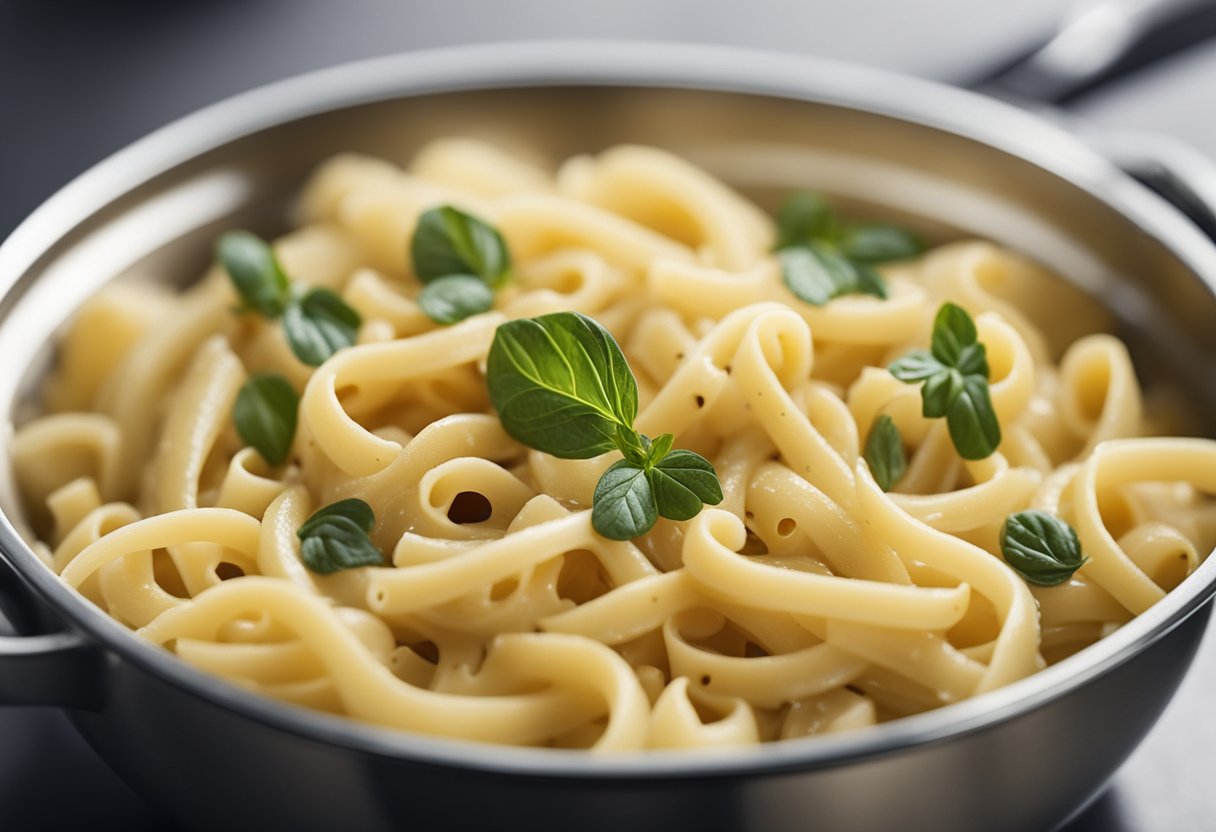
As someone who loves pasta carbonara, I know how tempting it can be to make a large batch and save the leftovers for later.
However, it’s important to store leftover carbonara properly to prevent bacterial growth and maintain its quality.
The best way to store leftover carbonara is in an airtight container in the refrigerator. Make sure to let it cool down to room temperature before storing it.
If you put hot food in the fridge, it can raise the temperature inside and potentially spoil other food.
It’s important to consume leftover carbonara within 3-4 days of cooking it. After that, the risk of bacterial growth increases, which can lead to food poisoning.
If you know you won’t be able to consume it within that time frame, consider freezing it.
When freezing carbonara, make sure to put it in a freezer-safe container or bag. Label it with the date so you can keep track of how long it’s been in the freezer.
Carbonara can be frozen for up to 2-3 months, but it’s best to consume it within the first month for optimal taste and texture.
It’s important to note that while freezing can extend the shelf life of carbonara, it can also change the texture. The sauce may separate or become grainy when thawed. To combat this, consider adding a splash of cream or milk when reheating.
In summary, proper storage is crucial when it comes to leftover carbonara. Store it in an airtight container in the refrigerator and consume within 3-4 days.
If you need to freeze it, make sure to use a freezer-safe container and consume it within 2-3 months. By following these guidelines, you can ensure the safety and quality of your leftover carbonara.
Preparation Before Reheating
Before reheating your pasta carbonara, it’s important to prepare it properly to ensure that it retains its flavor and texture. Here are a few things you should keep in mind:
Bring the Carbonara to Room Temperature
It’s a good idea to let the carbonara sit at room temperature for a while before reheating it. This will help it heat up more evenly later and make it easier to manipulate.
Just take the carbonara out of the refrigerator and let it sit on the counter for around 20-30 minutes.
Choose the Right Container
When reheating pasta carbonara, it’s important to choose the right container. Make sure that the container you use is microwave-safe if you plan on using the microwave, or oven-safe if you plan on using the oven.
A non-stick pan or skillet is also a good option if you plan on reheating on the stove.
Cover the Carbonara
To prevent the carbonara from drying out while reheating, it’s a good idea to cover it with foil or a lid. If you’re using a microwave-safe bowl or container, you can cover it with a microwave-safe lid or plastic wrap.
Add Oil or Butter
Adding a teaspoon of oil or butter to the pan before reheating can help prevent the carbonara from sticking and also add some extra flavor. Olive oil is a good option, but you can also use butter if you prefer.
By following these simple steps, you can ensure that your pasta carbonara is properly prepared for reheating and will retain its delicious flavor and texture.
Reheating Pasta Carbonara on Stovetop
When it comes to reheating pasta carbonara, one of the best ways is to use the stovetop method.
The stovetop method allows you to have more control over the heat and the consistency of the sauce. Here are some sub-sections to help you understand the stovetop reheating process better.
Stovetop Reheating Process
To reheat pasta carbonara on the stove, start by letting the pasta reach room temperature. Next, add a small amount of oil to a non-stick pan and heat it over low heat.
Once the oil is hot, add the pasta to the pan and gently stir it for about 5 minutes.
Avoiding Overcooking
One of the biggest concerns when reheating pasta carbonara on the stove is overcooking. To avoid this, it is essential to keep the heat low and stir the pasta frequently.
This will help to prevent the pasta from sticking to the pan and becoming overcooked.
Adding Moisture
Another issue that can arise when reheating pasta carbonara on the stove is that the sauce can become too thick and dry. To prevent this, you can add a small amount of liquid to the pan.
Water or cream can be used to add moisture to the sauce. You can also add a splash of milk to the pan to help keep the sauce creamy.
In summary, reheating pasta carbonara on the stove is a great way to enjoy this delicious dish again. By following these simple steps, you can ensure that your pasta remains soft and the sauce stays creamy.
Just remember to keep the heat low, stir frequently, and add moisture if necessary.
Reheating Pasta Carbonara in Microwave
If you’re in a hurry and don’t have much time to spare, reheating pasta carbonara in the microwave is a quick and easy option.
However, it’s important to follow the right process to prevent it from becoming soggy or mushy. Here’s how I do it:
Microwave Reheating Process
- Place the pasta carbonara in a microwave-safe dish.
- Cover the dish with a damp paper towel to prevent the pasta from drying out.
- Set the microwave to medium power to ensure even heating.
- Heat the pasta for 30 seconds at a time, stirring in between, until it’s heated through.
Preventing Sogginess
One of the biggest issues with reheating pasta carbonara in the microwave is that it can become soggy. To prevent this, it’s crucial to use short intervals and to stir the pasta in between.
Additionally, covering the dish with a damp paper towel can help retain moisture and prevent the pasta from becoming dry.
Reheating in Short Intervals
Using short intervals is key to preventing the pasta from becoming overcooked or mushy. Heating the pasta for 30 seconds at a time allows for even heating and gives you the opportunity to check the pasta’s progress and stir it in between.
If the pasta isn’t heated through after the first 30 seconds, continue heating it in 15-second intervals until it’s hot all the way through.
Overall, reheating pasta carbonara in the microwave is a quick and easy option. By following the right process and using short intervals, you can prevent it from becoming soggy or mushy and enjoy a delicious meal in no time.
Reheating Pasta Carbonara in Oven
If you want to reheat pasta carbonara in the oven, it is important to follow the right process to prevent it from burning or becoming too dry. Here are some steps to follow:
Oven Reheating Process
- Preheat your oven to 350°F.
- Place your leftover pasta carbonara in an oven-safe dish.
- Cover the dish with aluminum foil to prevent it from drying out.
- Place the dish in the oven and let it heat up for about 10-15 minutes.
Preventing Dryness
To prevent your pasta carbonara from becoming too dry, you can add a little bit of moisture to the dish. Here are some ways to do this:
- Drizzle a little bit of olive oil over the pasta before reheating it in the oven. This will help to keep it moist.
- Add a tablespoon or two of chicken broth or cream to the dish before reheating it. This will also help to keep it moist and add some extra flavor.
Using Foil for Even Heating
Using aluminum foil to cover your dish will help to ensure that the pasta carbonara heats up evenly. Here are some tips for using foil:
- Make sure that the foil is tightly sealed around the dish to prevent any steam from escaping.
- If you are reheating a large amount of pasta carbonara, you can use two layers of foil to help keep it warm.
- If you are worried about the foil sticking to the pasta, you can lightly coat it with cooking spray before covering the dish.
By following these steps, you can reheat your pasta carbonara in the oven without burning it or making it too dry. Enjoy your reheated pasta carbonara!
Final Touches After Reheating
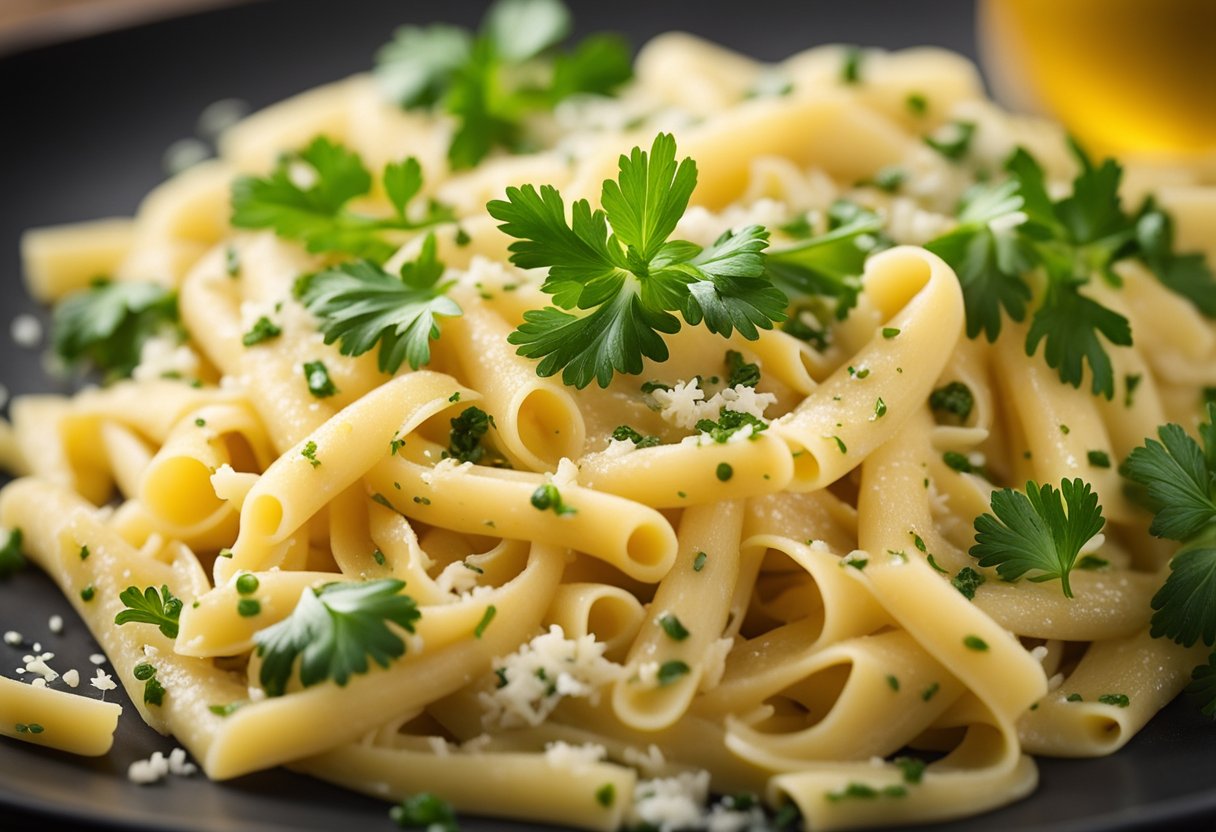
After reheating your pasta carbonara, there are a few final touches you can add to elevate its flavors and presentation. Here are some ideas:
Garnish
Garnishing your pasta carbonara can add a pop of color and extra flavor to your dish. Fresh parsley is a great option, as it pairs well with the creamy sauce and adds a vibrant green color.
Simply chop up some parsley and sprinkle it on top of your pasta before serving.
Cheese
Adding some grated cheese on top of your pasta carbonara can enhance the flavor and texture. Parmesan cheese is a classic choice, as it has a nutty and salty flavor that complements the creaminess of the sauce.
Grate some parmesan cheese over your pasta and enjoy the added richness.
Black Pepper
Freshly ground black pepper can add a subtle heat and depth of flavor to your pasta carbonara. Use a pepper mill to grind some black pepper over your pasta before serving.
Be sure to use a light hand, as too much pepper can overpower the dish.
Patience
It’s important to be patient when reheating your pasta carbonara. Rushing the process can cause the sauce to separate or become grainy.
Use low heat and stir occasionally to distribute heat evenly and maintain consistency. This will ensure that your pasta carbonara is reheated to perfection.
By adding some garnish, cheese, black pepper, and exercising patience, you can make your reheated pasta carbonara taste just as delicious as it did the first time around.
Tips and Tricks for Reheating Pasta Carbonara
As someone who loves pasta carbonara, I know how important it is to reheat it properly.
Here are some tips and tricks that I’ve learned over the years to make reheating pasta carbonara efficient and easy while maintaining its texture and creamy sauce.
Room Temperature
Before reheating your pasta carbonara, it’s essential to bring it to room temperature. This step is crucial because it helps to heat up the pasta evenly later on, making it easier to manipulate.
Leave the spaghetti carbonara at room temperature for a while before reheating.
Low and Steady Heat
To successfully reheat pasta carbonara, use low heat and be patient. This preserves the creamy sauce and prevents it from curdling.
High heat can cause the cream to break down, resulting in a grainy texture. So, it’s better to use low and steady heat to maintain the carbonara’s creamy texture.
Al Dente
When reheating pasta carbonara, make sure you don’t overcook the pasta. Overcooking the pasta will result in a mushy texture. It’s essential to keep the pasta al dente, which means it should still be firm to the bite.
Creamy Sauce
To maintain the creamy texture of the carbonara sauce, add some reserved sauce or cream when reheating. This will help to restore the creamy consistency if needed.
Storage
Proper storage is essential to maintain the quality of your pasta carbonara. Store any leftover carbonara pasta properly in an airtight container within two hours after cooking.
This will prevent bacteria from growing, and your pasta carbonara will stay fresh for longer.
Reheat Separately
The best way to reheat pasta carbonara is to reheat the sauce and pasta separately. Reheat the sauce on low heat and let it simmer for a few minutes.
Then, reheat the pasta separately and add it to the sauce. This will help to maintain the texture of the pasta and prevent it from becoming mushy.
In summary, reheating pasta carbonara can be tricky, but with these tips and tricks, you can maintain its creamy texture and delicious taste.
Remember to bring the pasta to room temperature, use low and steady heat, keep the pasta al dente, add reserved sauce or cream, store it properly, and reheat the sauce and pasta separately.
Potential Risks of Reheating Pasta Carbonara
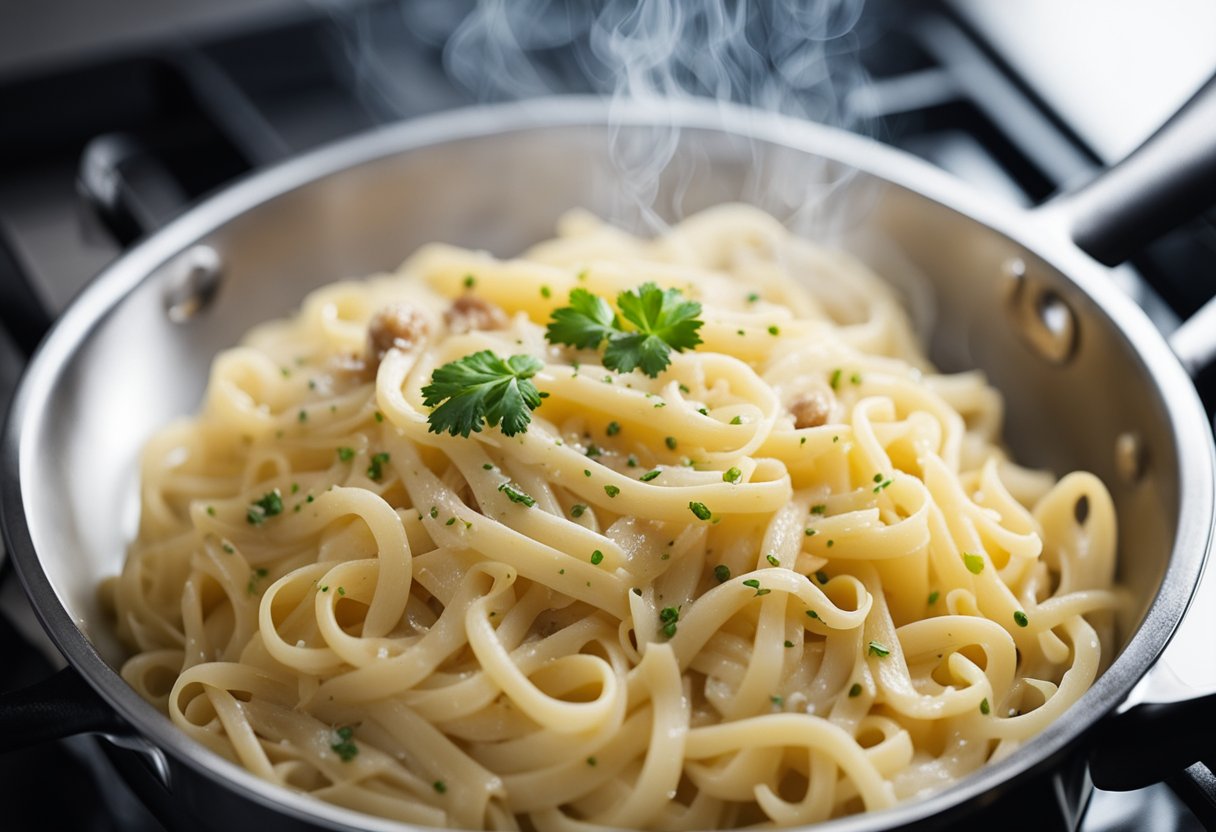
As someone who loves pasta carbonara, I know how tempting it can be to reheat leftovers for a quick and easy meal.
However, there are some potential risks associated with reheating pasta carbonara that you should be aware of.
One of the main risks of reheating pasta carbonara is bacterial growth. When pasta sits at room temperature for too long, bacteria can start to grow, which can cause food poisoning if consumed.
To minimize this risk, it’s important to refrigerate any leftover pasta carbonara as soon as possible and reheat it thoroughly before eating.
Another risk of reheating pasta carbonara is overcooking. If you’re not careful, reheating pasta carbonara can cause the eggs in the sauce to become scrambled and the pasta to become mushy.
To avoid this, it’s important to reheat the pasta slowly over low heat, stirring frequently to ensure that it heats evenly.
In addition to overcooking, there is also a risk of burning when reheating pasta carbonara. The high fat content in the sauce can cause it to burn easily if it’s heated too quickly or at too high of a temperature.
To avoid this, it’s important to use a low heat setting and to keep a close eye on the pasta as it reheats.
Overall, while reheating pasta carbonara can be a convenient way to enjoy leftovers, it’s important to be aware of the potential risks involved.
By following proper food safety guidelines and reheating the pasta slowly and carefully, you can minimize these risks and enjoy a delicious meal.
Frequently Asked Questions
What is the best way to reheat leftover pasta carbonara?
The best way to reheat leftover pasta carbonara is on the stovetop. Reheating it in the microwave can cause the sauce to separate and become watery.
To reheat on the stovetop, heat a non-stick skillet over medium-low heat. Add a splash of olive oil or butter to prevent sticking.
Once heated, gently place your leftover carbonara pasta in the skillet. Stir occasionally for even heating, ensuring all parts receive equal attention.
How long should you reheat carbonara in the microwave?
When reheating carbonara in the microwave, it’s important to be careful not to overheat it. Start with 30 seconds and then check the pasta.
If it’s not hot enough, continue reheating in 10-second intervals until it reaches the desired temperature.
Can you reheat carbonara without it curdling?
Yes, you can reheat carbonara without it curdling. The key is to reheat it slowly and gently. Don’t try to rush the process by using high heat. Instead, use a low heat setting and stir the pasta frequently to distribute the heat evenly.
How do you reheat carbonara in the oven?
To reheat carbonara in the oven, preheat the oven to 350°F. Place the carbonara in an oven-safe dish and cover it with foil. Bake for 10-15 minutes or until heated through.
What is the best way to store leftover carbonara?
The best way to store leftover carbonara is in an airtight container in the refrigerator. It will stay fresh for up to three days.
How do you make leftover pasta carbonara creamy again?
To make leftover pasta carbonara creamy again, add a splash of cream or milk to the pasta before reheating it. This will help to restore the creaminess of the sauce.



